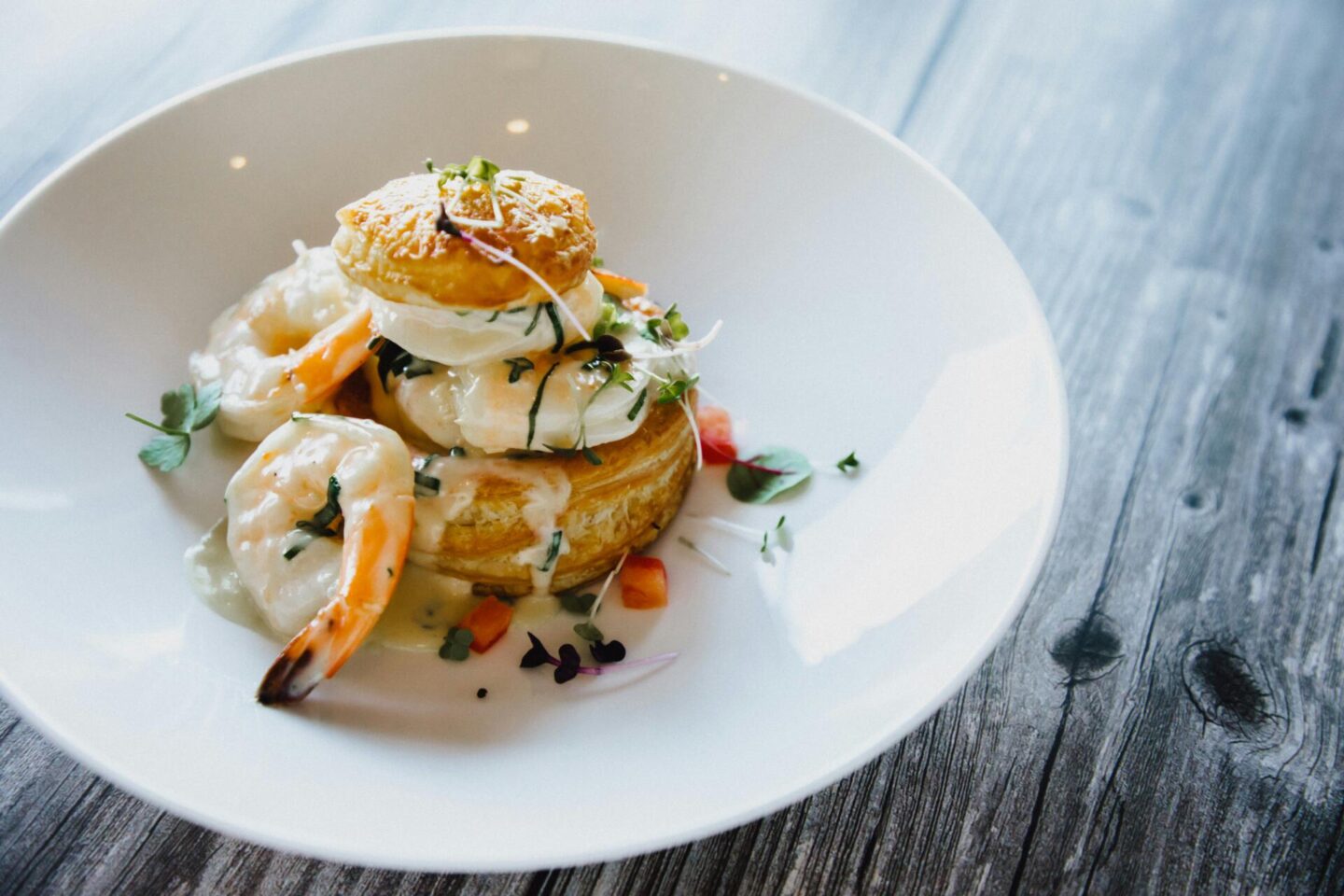
Most people would agree with the Roman epicurean, Apicius, who coined the phrase “we eat first with our eyes”. Anyone who has witnessed the sight of a succulent watermelon on a hot day or a juicy sirloin steak can testify to the power of visual appeal for getting the taste buds salivating and the appetite prepared in anticipation for the first mouthful.
When it comes to enticing customers or guests to dine at the table, presentation is an important factor to consider as the way a dish is plated and presented to the eye can greatly enhance the dining experience. In this article, we will explore plating techniques to help you elevate your food presentation skills into a culinary art.
Colour
A plate of food can come to life through the use of colour. Tastes, flavours and freshness can all be communicated to the viewer through the richness and variety of colours on display, which can be further enhanced through various plating techniques.
Brightly coloured ingredients set against a dark background can create a striking image that captures the eye and the appetite while more neutral-looking foods can be enhanced through the use of white plates and colourful garnishes such as fruits, fresh herbs and edible flowers or colourful sauces that add to the dish’s overall aesthetics.
Portions
Rather than looking messy or overcrowded, a beautifully proportioned plate of food can create visual balance and provide enough space to give key ingredients the attention they deserve.
Smaller portion sizes allow the plate to frame the food and provide a canvas where the ingredients can stand out. With greater space available, the ingredients can be arranged in a visually attractive way that infuses a sense of artistry and flair onto the plate and allows the diner to fully appreciate both the craftsmanship involved along with the flavours of the food.
Add Dimension
Rather than simply arranging food items next to one another on the plate, adding height can create a sense of refinement and sophistication. This vertical dimension allows you to showcase each of your ingredients and also invites an exploratory aspect to the dish. Plating techniques that create height can be achieved in various ways such as:
- Stacking: This is where similar items are placed on top of each other by hand or with the use of stacking rings or molds.
- Twirling: Here foods are arranged in a vertical spiral formation on the plate, such as julienne vegetables or spaghetti that has been twisted into an elegant, winding shape.
- Layering: The various ingredients or components of a dish can be arranged in layers, while revealing elements of each layer to the viewer.
Finishing Touches
Sauces and purees not only add flavour to a dish but can also be artfully incorporated to add an artistic touch. Whether it’s swishes, swooshes, dollops or drizzles, make sure to wipe the edges to ensure a clean finish and professional look to your plate.
When focusing on creative plating techniques, it’s also important to ensure food hygiene and proper food handling of all your ingredients. You can learn more about how to prevent poor food safety by visiting this site.
Follow these food plating tips to help enhance the culinary experience of your diners.

